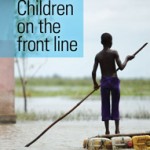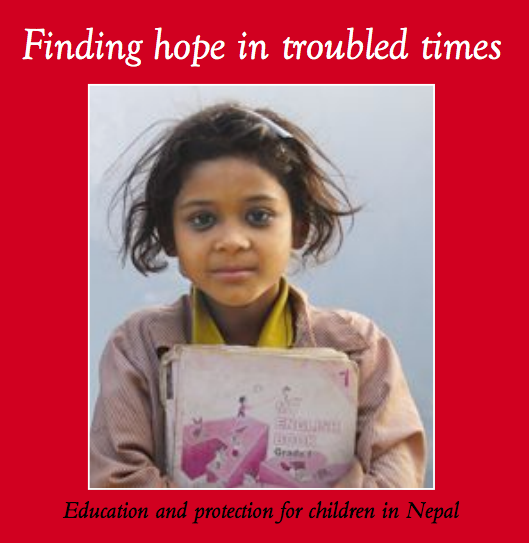-
children's environments research group
This article draws from a study investigating the life trajectories of 17 youth climate activists from 14 countries through semi-structured, life memory interviews using Internet-based methods. The interpretations […]
-
children's environments research group
This article demonstrates the potential of participatory mapping approaches to coordinate spontaneous volunteers and assist government agencies and humanitarian organizations in emergency contexts. The research focuses on one case study of a volunteer mapping project in the Rockaways in New York City to help communicate the needs reported by community members to outsiders after Hurricane Sandy. The map proved to be helpful in the coordination of relief efforts by volunteers and in understanding the variety of groups involved in emergency response. However, the map could not be sustained for long-term community recovery. The research offers new evidence of the potential contributions of spontaneous volunteers that can be leveraged, replicated and improved upon for future disaster planning and response. It also highlights the importance of volunteered geographic information in ensuring that emergency response is guided by the needs reported by citizens themselves, even if they do not have access to technology.
Click here to preview article
Title: Participatory Mapping Approaches to Coordinate the Emergency Response of Spontaneous Volunteers After Hurricane Sandy
Authors: Pamela Wridt, John E. Seley, Scott R. Fisher & Bryce DuBois
Publication Date: 2014
Publisher: International Journal of E-Planning Research -
children's environments research group
Title: A Review of “Children, Citizenship, and Environment: Nurturing a Democratic Imagination in a Changing World” by Bronwyn Hayward. New York, NY: Routledge, 2012, 208 pages. ISBN: 978-1-84971-437-2 ($44.94, paperback).
Author: Scott Fisher
Publication Date: 2014
Publisher: Journal of Environmental Education, Volume 45, Issue 4
-
children's environments research group
This article provides a brief overview of the implications for children of climate change—both of extreme weather events and more gradual changes, along with the adaptations likely to be made at various levels. […]
-
children's environments research group
This paper discusses the particular and disproportionate risks to urban children in poverty from various aspects of climate change, both extreme events and changing means. It explores the potential impacts on children’s health, learning and psychosocial well-being, and considers the implications of family coping strategies for children. The paper goes on to discuss the implications for adaptation, making recommendations for an adaptation agenda that focuses on the realities for children. Preparatory measures are considered, as well as responses to extreme events and to changes in weather patterns.
Click here to access [PDF]
Title: The impacts of climate change for children in poor urban areas
Author(s): Sheridan Bartlett
Publication year: 2008
Publisher: Environment and Urbanization
-
children's environments research group
This online resource is a clearinghouse of information on how to conduct community mapping with and for children and youth growing up in urban areas to promote social action and neighborhood change. The site outlines strategies for child and youth mapping projects, provides key examples of mapping projects, and organizes a comprehensive database of resources prepared by a number of organizations concerned with using mapping to support children and youth’s participation in social and environmental change. The site is available in Spanish and English.
Click here to access [website]
Title: uMAP! An educational resource on how to conduct participatory community mapping with children and youth to create social and environmental change
Author(s): Pamela Wridt
Publication year: 2009
Publisher: Supported by the Robert Wood Johnson Foundation
-
children's environments research group
In this chapter Hart argues that the emphasis on children’s decision making with adults and consultation with adults in formal settings is a much too narrow view of children’s social participation for citizenship. […]
-
children's environments research group
In the context of post-disaster reconstruction, there is growing awareness of the need for more integrated inclusive processes that allow people to retake control of their lives, and that ensure practical responses to local conditions. Yet, a range of pressures and challenges conspire to make these approaches appear unworkable.
“Participation” in this context, if it happens at all, is often cursory and superficial, whether it involves children or adults. This paper describes an attempt to respond to these challenges in one small community in Tamil Nadu, India, after the 2004 Indian Ocean tsunami. The scope for real involvement on the part of children and
their families was limited by a number of factors, but in the end they were able to exercise some genuine control over the reconstruction of their homes and neighborhood. The paper discusses the replicability of this case, and argues for the importance of a process that includes children and adults together.Click here to download [PDF]
Title: After the tsunami in Cooks Nagar: The challenges of participatory rebuilding
Author(s): Sheridan Bartlett
Publication Date: 2008
Publisher: Children, Youth and Environments
-
children's environments research group
This handbook aims at contributing to disaster response reconstruction programmes that not only rebuild the physical living environment but that strengthen the capacity of communities to regain control of their own lives, with a focus on their children’s present and future well-being. It considers the Why, What, and How of planning for post-disaster reconstruction with children and families, and it focuses on supporting the coping mechanisms of families and communities and on children’s health, safety, and emotional security.
Click here to download [PDF]
Title: Making Space for Children: Planning for Post-disaster Reconstruction with Children and their Families
Author(s): Sheridan Bartlett, Selim Iltus
Publication Date: 2007
Publisher: Save the Children UK & Save the Children Sweden
-
children's environments research group
In this introduction to the special issue on children’s participation, Cahill and Hart address issues raised by the collected papers and identify new questions for further engagement, rather than offer a general overview of the field. These questions include What is the context for participation? What does it mean to “participate”? Why have children been excluded from the current discourses on young people’s civic participation? What is the role of ideology in youth participation programs? What roles do young people play in their communities? And, finally, the overarching question that structures our discussion: What lessons can we learn about participation from an understanding of the everyday lives of young people?
Click here to download [PDF]
Title: Re-Thinking the Boundaries of Civic Participation by Children and Youth in North America
Author(s): Caitlin Cahill, Roger Hart
Publication Date: 2007
Publisher: Children, Youth and Environments
-
children's environments research group
This article argues for the importance of including children in community governance for addressing climate change as an alternative to short-term, one-off projects. It addresses key issues for involving children in community governance for sustainability, such as why and how children should be involved, and highlights a number of examples of children’s participation in community governance. The article concludes by outlining important considerations for children’s participation in community governance. The publication was used by UNICEF to inform their advocacy at the 2014 UN Secretary General’s Climate Summit.
Click here to download [PDF]
Title: Beyond Projects: Involving Children in Community Governance as a Fundamental Strategy for Facing Climate Change
Author(s): Roger Hart, Scott Fisher, Bijan Kimiagar
Publication year: 2014
Publisher: UNICEF Office of Research, Innocenti Research Centre

-
children's environments research group
This manuscript reports on research centered on education in times of conflict in Nepal. It addresses a number of questions relevant to children, parents, and communities about education in Nepal, including school management, discipline, teaching, and discrimination. The report concludes with a number of recommendations for both programming and advocacy. The report is organized in an accessible manner, with charts and clear graphics.
Click here to download [PDF]
Title: Finding Hope in Troubled Times: Education and Protection for Children in Nepal
Author(s): Sheridan Bartlett
Publication Date: 2007
-
Scott Fisher became a registered member


